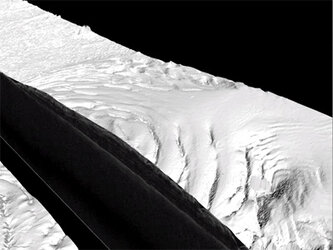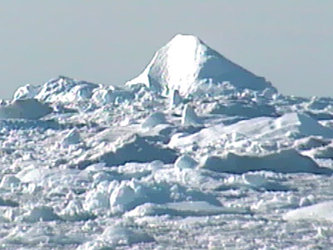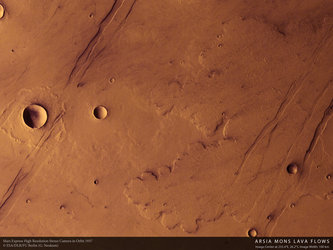Interview: Frost and ice below the martian surface
With Bill Feldman, Planetary Science Institute, Arizona, USA and Bernard Schmitt, Laboratoire de Planetologie de Grenoble, France.
Where can we expect to find water ice on Mars?
Bill Feldman, Planetary Science Institute, Tucson [BF]: Water ice is never stable within 45º of the equator. Poleward of 50º in both hemispheres, ice can be stable under the surface. In the north, ice plains have recently been mapped in a ring around the pole at these latitudes. Once you get beyond 85º, ice can exist on the surface. At the north pole there is a 2-3-km-thick layer of water ice on the surface. It is similar at the south pole, but with carbon dioxide over it.
When was the ring of water ice surrounding the north polar cap discovered?

BF: It was discovered by the neutron spectrometer onboard NASA’s Mars Odyssey in 2002. The instrument actually shows that lots of hydrogen is present in the martian soil. About 45% of any planetary surface is composed of oxygen because silicon dioxide is one of the main components of rock. Because a water molecule contains two hydrogen and one oxygen atoms, it implies that there must be lots of water ice there.
Are there other seasonal sources of water in addition to the north polar cap?

Bernard Schmitt, Laboratoire de Planetologie de Grenoble, France [BS]: Earlier, we thought that the seasonal carbon dioxide layer at the north polar cap had to sublimate before the water ice there was exposed. So, water couldn’t start entering the atmosphere until the late spring. But sublimation of seasonal deposits of carbon dioxide releases some millimetres of water frost that form a moving ring of ice on the surface around the pole, starting at low latitude of about 50°. It means that water trapped in these deposits sublimates into the martian atmosphere starting in the early spring. It changes the details of the water cycle but not the global picture.
What does Mars Express allow us to do?
BS: The OMEGA instrument shows us where and when we can find ice on the martian surface. It can also tell us what is water and what is carbon dioxide. This is important because carbon dioxide ice is at 145 K (128° below zero), so as soon as water comes into contact with carbon dioxide ice, it becomes trapped. The south polar cap is a major trap for water vapour on Mars. Once it touches the carbon dioxide there, it cannot escape again. OMEGA is also showing us minerals that have adsorbed water, so water molecules stick to the surface of the minerals in the uppermost layers of Mars. So these, too, can release water into the atmosphere in the summer when they have been heated up.
Where next for this research?
BF: We need rovers and landers to chemically analyse the hydrated minerals. Currently the NASA rovers are doing this. Computer models can tell us how stable these minerals have been in the past. There is a lot of work still to do before we fully understand the martian water cycle and the past climate of the planet.











